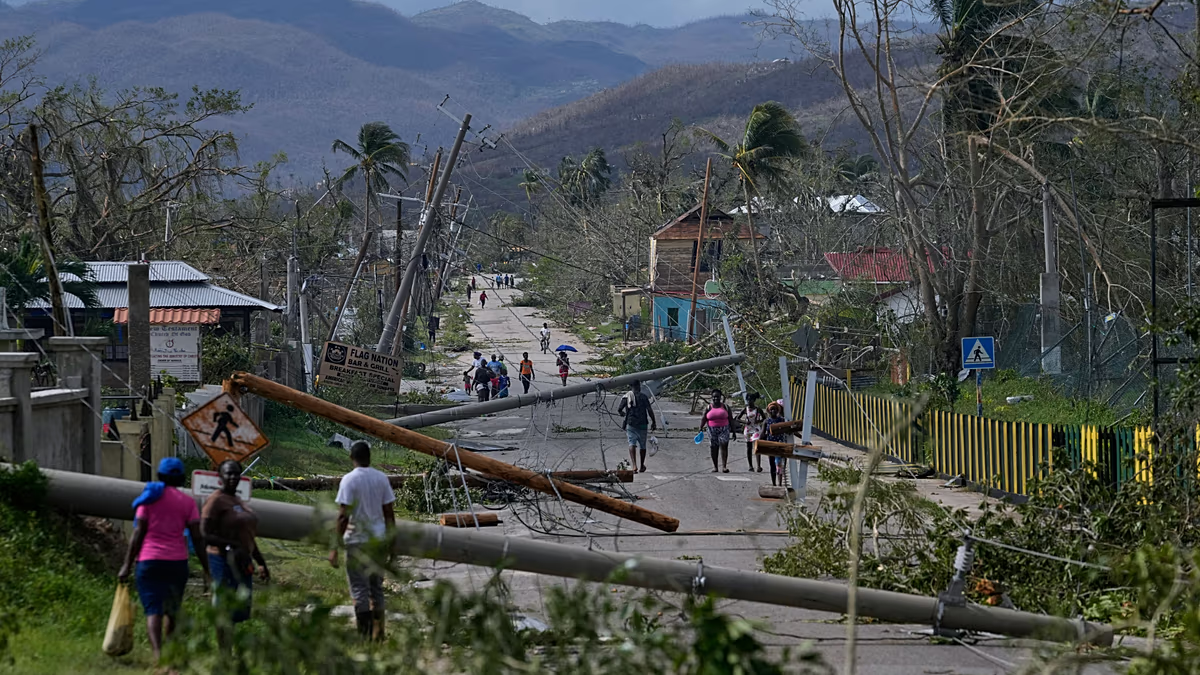Navigating the Stormy Seas of Travel Insurance: What Hurricane Melissa Taught Us
When Hurricane Melissa tore through the Caribbean last week, thousands of vacationers faced a nightmare scenario of cancelled flights and rerouted cruises. As travelers scrambled to salvage their holiday plans, many turned to their travel insurance policies for help—only to discover that weather-related coverage isn’t as straightforward as they might have assumed. This recent disaster highlights an important lesson for all travelers: understanding the fine print of your insurance policy before disaster strikes can make the difference between financial protection and significant losses. The timing of when you purchase your policy, the specific language defining covered events, and the documentation you maintain during your trip all play crucial roles in determining whether you’ll be compensated when extreme weather disrupts your vacation plans.
The most critical factor in weather-related travel insurance claims is timing. As Lauren McCormick, public relations manager at travel insurance comparison site Squaremouth, explains, coverage for hurricanes is only valid if you purchase your policy before the storm is named. This requirement extends to other natural disasters as well—your policy must be in place before the event becomes publicly known or forecasted. This timing requirement underscores why travel experts consistently advise purchasing insurance immediately after booking your trip rather than waiting until your departure date approaches. By securing coverage early, you protect yourself against the possibility that a storm might develop and receive a name, which would immediately invalidate any insurance purchased afterward. Many travelers learned this lesson the hard way during Hurricane Melissa when they discovered too late that policies purchased after the storm was named provided no protection against its effects. For those planning trips to hurricane-prone regions during storm season (typically June through November in the Atlantic), this timing consideration becomes even more crucial, as the likelihood of a named storm affecting travel plans increases significantly.
It’s equally important to understand what qualifies as a covered weather event under most policies. Simply experiencing “bad weather” at your destination isn’t enough to trigger insurance benefits. McCormick clarifies that coverage typically applies only when conditions directly and significantly disrupt your trip. Qualifying disruptions usually include mandatory evacuations, official hurricane warnings, situations where your accommodation becomes uninhabitable or inaccessible, or circumstances causing substantial delays to travel services—typically 24 to 48 hours or more. When these conditions are met, standard policies will generally cover prepaid, non-refundable expenses such as flights and accommodation bookings. Many policies also provide compensation for additional costs incurred while waiting for delayed transport, including food and lodging expenses, as well as coverage for missed connections resulting from weather delays. This means that minor inconveniences like rain during a beach vacation or slight flight delays wouldn’t qualify for reimbursement, but major disruptions that fundamentally alter or prevent your trip would be covered, provided you purchased your policy before the storm was named.
Beyond the basic trip cancellation and interruption benefits, some policies offer additional protection specifically valuable during extreme weather events. One particularly important benefit to look for is non-medical evacuation coverage, which can transport travelers from dangerous situations to safety. As McCormick explains, this benefit is designed to protect you during unforeseen emergencies beyond medical issues, including natural disasters, civil unrest, or political instability. The specifics of this coverage vary between policies, so travelers should carefully review their documentation to understand what situations qualify for evacuation assistance and what limitations might apply. Some comprehensive policies also include travel delay benefits that kick in after shorter waiting periods, additional accommodation expenses if you’re stranded, and even coverage for rental cars or alternative transportation if original plans fall through. These supplementary benefits can be extremely valuable during weather emergencies, potentially covering thousands of dollars in unexpected expenses that might otherwise come directly from your pocket. The variation in coverage between basic and comprehensive policies makes comparison shopping essential for travelers heading to regions where extreme weather is a possibility.
For maximum protection and flexibility, travelers concerned about potential weather disruptions should consider policies offering “Cancel For Any Reason” (CFAR) coverage. While significantly more expensive than standard travel insurance (typically 40-50% more), CFAR policies provide the unique benefit of allowing travelers to cancel their plans for reasons not covered under normal policies, including concern about potential weather that hasn’t yet triggered official warnings or cancellations. This option provides compensation (usually 50-75% of prepaid costs) even when standard policies wouldn’t pay out—such as when you decide to cancel a Caribbean vacation because a hurricane is developing, even though it hasn’t yet directly impacted your destination or resulted in flight cancellations. During your trip, maintaining thorough documentation becomes crucial if weather does disrupt your plans. Travelers should save all communications about changed or cancelled reservations, photograph damage to accommodations, keep receipts for additional expenses, and obtain copies of any official evacuation orders or weather warnings. This documentation serves as evidence when filing a claim and significantly improves your chances of a successful reimbursement.
It’s worth noting that travel insurance providers adjust their pricing and terms based on risk factors, including your destination and the timing of your trip. Policies covering travel during hurricane season to Caribbean destinations will typically cost more than identical coverage for trips to less weather-vulnerable locations or during safer seasons. Some insurers may also include specific exclusions or limitations for certain high-risk destinations or time periods. This risk-based pricing reflects the increased likelihood of claims during storm seasons and underscores the importance of budgeting appropriately for comprehensive coverage when planning trips to weather-vulnerable regions. Despite the additional cost, the protection provided by a well-chosen travel insurance policy often proves invaluable when extreme weather strikes. As Hurricane Melissa demonstrated, the difference between having appropriate coverage and facing uninsured losses can amount to thousands of dollars and tremendous peace of mind during an already stressful situation. By understanding the nuances of when and how weather-related coverage applies, travelers can make informed decisions about their insurance needs and ensure they’re protected when the forecast turns ominous.


